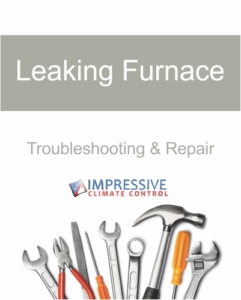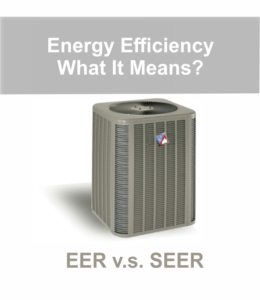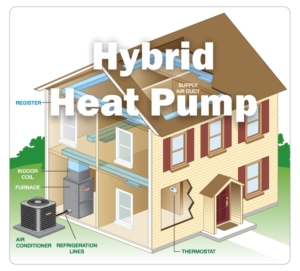Furnace Leaking Water
Why Is My Furnace Leaking Water?
You just realised your furnace leaking water in your newly finished basement, and not sure why. Under no circumstance should you ever see water around your furnace. There is a sign that something is leaking and not draining properly. It could be a simple fix and to begin troubleshooting, you don’t have to go in a panic mode. Depending on the season, a furnace leaking water should have you inspect different places to find the trigger of the leak. Mainly, an overflowing evaporator drain pans used with furnace coils, air handler coils, mini splits, even dehumidifiers create lots of insurance claims. More often than not, the mini-flood results from lack of annual preventive maintenance: dirty coils, plugged drain lines, loss of charge mean lots of water with nowhere beneficial to go.
Why Is My Furnace Leaking Water In Summer?
-
Improper Insulation
During the cooling season, the indoor evaporator coil and the suction line sweats. The refrigerant lines should have a black insulation (armaflex), to keep the condensation from dripping. Sometimes if the insulation is missing or if it has open seems, it can cause dripping and obviously this is an easy fix. All armaflex joints should be butted-up tight and well taped.
-
Dirty Evaporator Coil
Your air conditioner evaporator coil produces a lot of condensation (water) during the summer. Eventually this water runs down the coil into a drain pan, then out to the drain. Once drained water goes either into the ground, outside the house, or into a condensate pump. Then in turn, the pump takes the water either outside the house or into a plumbing drain. If the coil is dirty, then the water, instead of running down the coil, will hit the dirt, then drip onto the floor. This is one reason why the coil should be cleaned annually, not to mention for efficiency reasons. Sometimes the indoor coil can actually ice-up. And when the ice eventually melts, it drips onto the floor. Like water, you should never see ice anywhere on your system during the cooling season.
-
Clogged Evaporator Drain
Now if you have a dirty coil, the water will mix with the dirt and the dirt will end up in the pan. A dirty drain pan will get clogged and water leaks will appear in the basement. The bottom of the trap is the most common source of a clog and it can be cleaned out with a long flexible cleaning brush. Keep in mind, it doesn’t take much dirt to clog a drain.
And if your unit is in an attic (Such as High Velocity) or a finished basement, this can cause terrible damage. This is another reason why it is important to always have a good, clean, properly sized air filter, along with having annual inspections.
Why Is My Furnace Leaking Water In Winter?
Did you know that a high efficiency furnace with 100K BTU/H in natural gas will produce approximately two gallons (7.5 liters) of water during every hour of operation?
While many high efficiency units have condensate directed to a nearby floor drain, some condensing furnaces or boilers must utilise a condensate pump sending the liquid to a remote drain elsewhere in the building.
Sometimes the condensate is pumped to a sink, laundry tub, or even outside. Pumping condensate to a receptacle that can be stopped-up is inviting a flood creating property damage. Ask you installer to assure a secondary float switch is available. In the event of a condensate pump failure, the float switch will signal the control circuit to power down.
Tips On How To Prevent Minor Flooding!
-
Proper Installation
Furnaces, water heaters, boilers and air handlers should be installed on a solid concrete base raising the appliance about two inches above the floor, providing some protection from minor flooding.
-
Install Float Switch
Install a float switch in the evaporator coil secondary drain outlet.
-
Annual Maintenance
It is better to have a licensed gas technician to inspect your drain pan, evaporator coil and vents. Plus blow out the drain lines and clean traps on every maintenance call.
I have no answers for Mother Nature’s wrath; destructive overland flooding is a fact of life. However, on the HVAC side, it is important that we do all we can to prevent as much water damage as possible. Our Licensed gas fitters use standard industry techniques and materials when on maintenance calls. They educate home owners to better maintain their HVAC systems and offer protective devices where possible.




